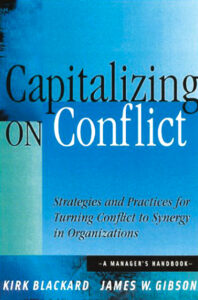As an employee, you may be able to avoid conflict just by keeping your head down. As a manager, though, there’s no way to avoid disagreements and negativity among team members. The key, therefore, is not to avoid it – but to manage it.
When team members disagree or have conflicting personalities, it can be tough to know just what to do. Should you make policies? Act as a counselor? Ignore the fighting? Here are 6 tips to help you diffuse workplace conflict.
Tip 1:
Have a policy in place. It’s one thing for employees to air different points of view. It’s another to directly confront, belittle, or gossip about team members. Rather than managing such situations as they come up, have a clear policy in place. That way, when situations do arise (and they will!) you can turn to the policy for an answer – and not have to defend your decision.
Tip 2:
Act quickly. If you assume that conflicts will always resolve themselves, you’ll often be wrong. Yes, people will stop arguing for the moment. But the anger won’t go away, nor will the sense of being wronged. Conflict will continue to simmer under the surface until it erupts at the next meeting, and the next.
Tip 3:
Listen to both points of view. If the conflict is over something tangible, such as resources or time, it’s possible to actually collect information from both parties, and then consider it from an unbiased perspective. If the conflict is over something subtle, such as respect or friendship, it may be necessary to ask both parties to take time away from one another.
Tip 4:
Look for compromise. Perhaps two employees have different ideas about how best to approach a client. It may well be possible to incorporate aspects of each team member’s ideas into a single approach that both can agree to.
Tip 5:
Look for the hidden problem. Sometimes, disagreements may appear to be about one thing – larger office space, for example – when it’s really about something else – respect. Sally’s frustration over losing a corner office to Bob may have nothing to do with Bob, but rather with a need for greater autonomy, a larger role, or more credit for work she’s done. By meeting the underlying need, you can diffuse the conflict.
Tip 6:
Create a safe place to air disagreements. If employees feel that they must be positive and upbeat at every meeting, they lack an opportunity to share worries and doubts. Those concerns get bottled up, and may come out at inopportune times. Build a time into every meeting to listen to and address concerns and questions, so long as they are not couched as attacks. You can also create an open-door policy so that private concerns can be aired without too many listening ears.
No one can change human nature, so conflict will be a part of your work life. But by following these tips, you’ll be able to manage conflict and keep it from creating real problems in the workplace.
For additional information about dealing with workplace conflict, please read these book summaries:







